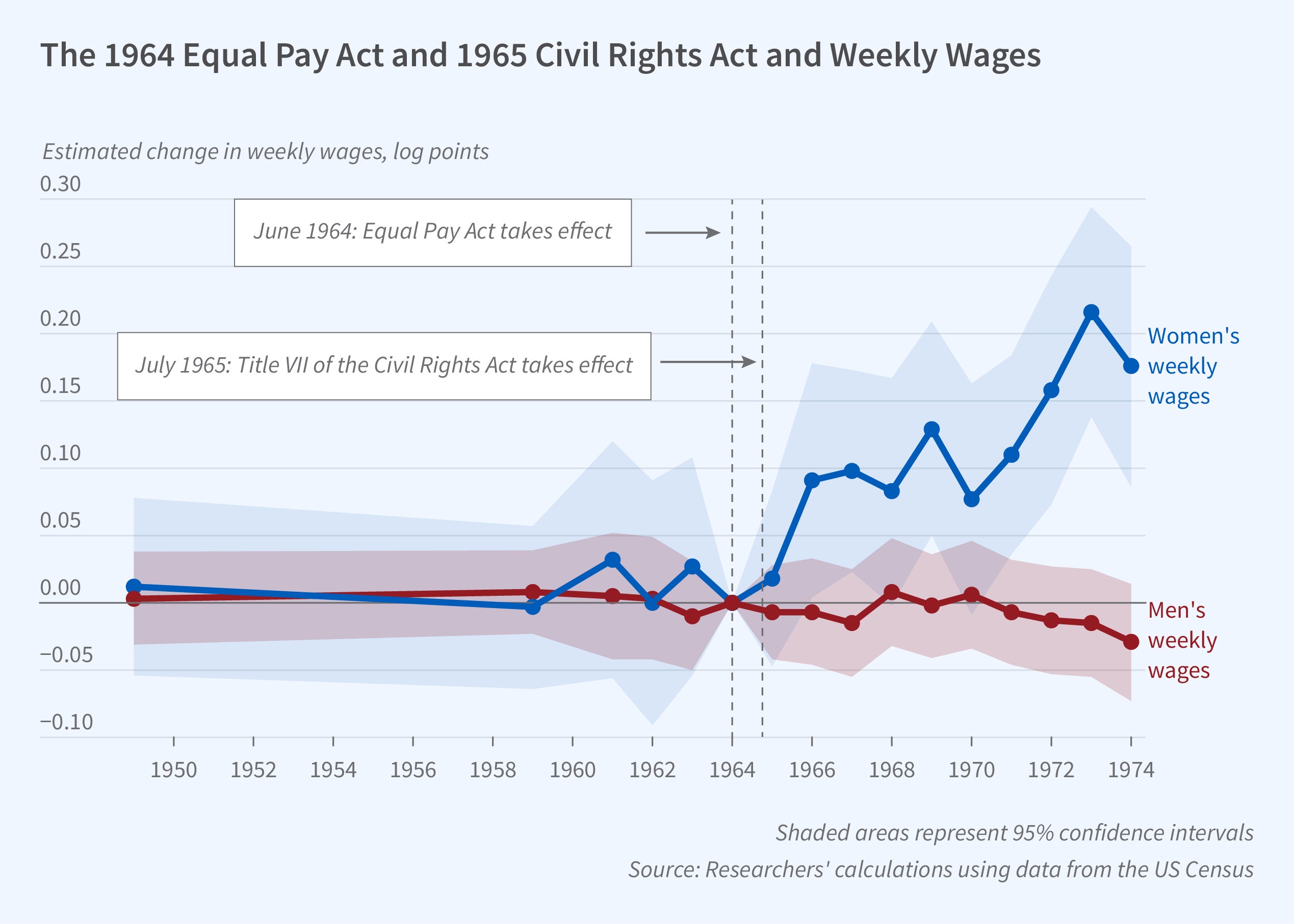Legal Changes in the 1960s Narrowed the Gender Pay Gap

Two landmark pieces of federal legislation in the early 1960s targeted pay discrimination against women. In How the 1963 Equal Pay Act and 1964 Civil Rights Act Shaped the Gender Gap in Pay (NBER Working Paper 31332), Martha J. Bailey, Thomas E. Helgerman, and Bryan A. Stuart present new estimates of how these bills affected gender-based pay disparities.
The study analyzes data from the 1950–60 Census and the 1962–75 Annual Social and Economic Supplements of the Current Population Survey. It excludes individuals in the agriculture, forestry, and fishing industries and those who report being self-employed.
Passage of antidiscrimination legislation in the early 1960s was followed by substantial relative growth in women’s wages.
The researchers employ two different empirical strategies. First, they test the hypothesis that the bills had a greater impact in the 28 states that did not have preexisting equal pay laws, a pattern consistent with federal antidiscrimination legislation having larger effects in states without prior protections. They find that women’s weekly wages rose by 9 percent more in those states, which were primarily located in the South and the western Midwest, than in the 22 states with preexisting laws. The gains were greater in the mid-1960s than in the later part of the decade and much larger among women than men.
Second, the researchers show that the federal legislation had a greater impact on women’s wages in jobs with larger preexisting pay gaps, a pattern consistent with federal antidiscrimination legislation having greater effects in jobs with more gender discrimination. This analysis suggests that women’s wages grew by 11 percent in jobs with the average gender pay gap. The impact was similar for White and Black women, suggesting that the Civil Rights Act was not a key factor, and the women’s gains do not appear to have come at the expense of men’s wages. The researchers do not find differences in the growth rate of men’s wages after 1964 in job categories with large and small gender wage disparities.
The researchers note that their results suggest that the federal legislation had its greatest impact on lower-paying jobs, where it is easier to measure job comparability. They also find that these laws had little effect on median wages among full-time, full-year workers, which is the sample tracked by the Census Bureau. They also point out that an influx of women into the US labor force during the 1960s may have created downward pressure on women’s wages, thereby reducing the apparent impact of the legislation in the time series.
—Steve Maas
This work was generously supported by the University of Michigan (UM) Department of Economics (MITREG022729) and the UCLA Department of Economics. We gratefully acknowledge the use of the services and facilities of the California Center for Population Research at UCLA (P2C HD041022), which receives funding from the Eunice Kennedy Shriver National Institute of Child Health and Human Development (NICHD). During work on this project, Bryan A. Stuart was supported by the NICHD (T32 HD0007339) as a University of Michigan Population Studies Center trainee.


